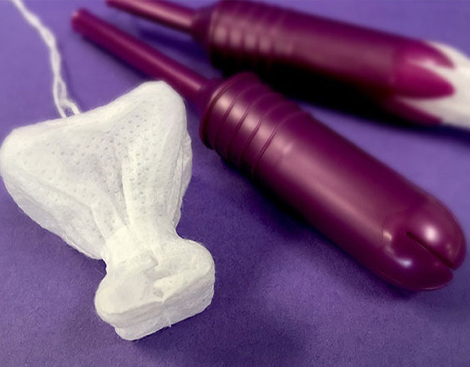
September 10, 2024
Research Study Development On Conformity Of Pelvic Floor Muscle Mass Training In People With Urinary System Incontinence
Urinary Incontinence In order to boost bladder emptying, decreasing outlet resistance via thoughtful blockade at the bladder neck/urethra has been investigated. One possible study with tamsulosin showed similar improvement in terms of uroflowmetry criteria (especially in the percentage of patients that had a great healing feedback) in females with BOO (39.4%) or DU (32.7%) [492] An additional longitudinal study consisting of fourteen females with DU showed medical and urodynamic enhancements after tamsulosin [493] A possible single-blind RCT in female clients with DU compared the efficacy of alpha-blocker, cholinergic medications, or mix treatment, with the last exhibiting the very best results [494] PFMT for the management of UI has actually been explained in a number of old texts of China, India, Greece and Rome [37, 43] It was discovered that 50 − 90% of females fell into the category of MUI based on patient-reported response to the Medical Epidemiologic and Social Aspects of Aging and Urinary Distress Inventory (UDI) questionnaires. Nonetheless, when objective requirements such as urodynamic findings were used, only 8% of females were categorised as having MUI. Objective remedy rate was additionally similar with Altis ® (88% and 87% in non-obese and overweight women) at 2 years follow-up [429] The sling size ought to be long enough to allow it to pass through into the retropubic space. The omphalos of the graft is approximated to the proximal third of the urethra with 2 simple 4-0 polyglactin (Vicryl ®) stitches. For placement of the sling, a Tonsil clamp, 15-degree Stamey needle, or the double-pronged band service provider (ie, Raz needle passer-- writers' choice) is passed through the previously made Pfannenstiel laceration.Functional Mind Imaging And The Neural Basis For Nullifying Dysfunction In Older Grownups
- Certain racial and ethnic terms are chosen over collective terms, when possible.
- Absorbing items are not the only option available for guys with urinary incontinence.
- Urodynamic medical diagnosis of DO does not influence therapy end results in individuals with OAB.
- Two vital trials helped shape the guidelines regarding pre-operative UDS in pure SUI.
- In augmentation cystoplasty (additionally known as clam cystoplasty), a detubularised sector of bowel is put right into the bivalved bladder wall surface.
Medically Complex Clients
As we see with suburethral slings, a variety of elements appear to affect the rate of graft erosion. Like surgical treatment for SUI, the type of graft product utilized is certainly an important factor when repairing prolapse. As with suburethral sling surgical treatment, polytetrafluoroethylene (Gore-Tex) and silicone-coated polyester meshes tend to bring about unacceptably high erosion rates. Human use is the supreme test of the well worth of a product in pelvic restoration, however laboratory analysis of sling residential properties can be of worth also. Making use of a bunny model, Dora and colleagues54 looked at time-dependent variations in the biomechanical properties of cadaveric fascia, porcine dermis and small intestine mucosa, polypropylene mesh, and autologous fascia. This surgical procedure is recommended for males with moderate to extreme urinary leakage, like those who have undertaken prostate surgical procedure. MUS remains the most thoroughly studied therapy with the most affordable difficulty rates, however ladies should be notified regarding the rare but serious disintegrations mesh-related issues. Perspectives in the growth of new bio-synthetic mesh materials may bring about brand-new surgical strategies with less difficulties. Every one of these research studies have a basic and usual idea that, when utilized in ideal clients by suitably educated surgeons, mesh treatments have a good safety and efficiency profile [27]What is the best therapy for urinary system incontinence?

Healing Management Of Incontinence And Pelvic Discomfort
An older 12-week double-blind RCT contrasted oxybutynin 10 mg and tamsulosin 0.4 mg to tamsulosin and placebo. Baseline IPSS was 20 and reaction to therapy specified as ≥ 3 point reduction in IPSS was higher (75%) in the combined drug team compared to placebo (65%). Mean IPSS change was -6.9 versus -5.2, and there was no distinction in unfavorable events or withdrawals as a result of unfavorable occasions (modest certainty). Anticholinergics have actually been accepted and made use of for OAB signs and symptoms in men and women as outlined Urinary urgency in the AUA/SUFU non-neurogenic OAB Standard.170 Although the precise cause may be differed, both storage space LUTS and OAB have the same symptoms. While anticholinergics alone have actually been used for OAB symptoms in males and females, there has actually been some hesitation for clinicians to use them alone in clients with LUTS/BPH as a result of the possible threat of aggravating bladder residuals or retention. Restorative treatments for BOO objective to decrease outlet resistance in order to raise urinary system flow, enhance bladder draining and hence decrease voiding and storage space LUTS [74,509,529] Therapy selection is frequently determined by the underlying source of the blockage. Diagnosis of BOO in females, although depending on official stress-- circulation researches, may be suggested by a number of medical and other non-invasive evaluations. Usage standardised classification of bladder electrical outlet blockage in women (physiological or functional), and research populaces should be fully characterised using such category. These problems are not considered in these guidelines and are covered somewhere else [9] 
Social Links